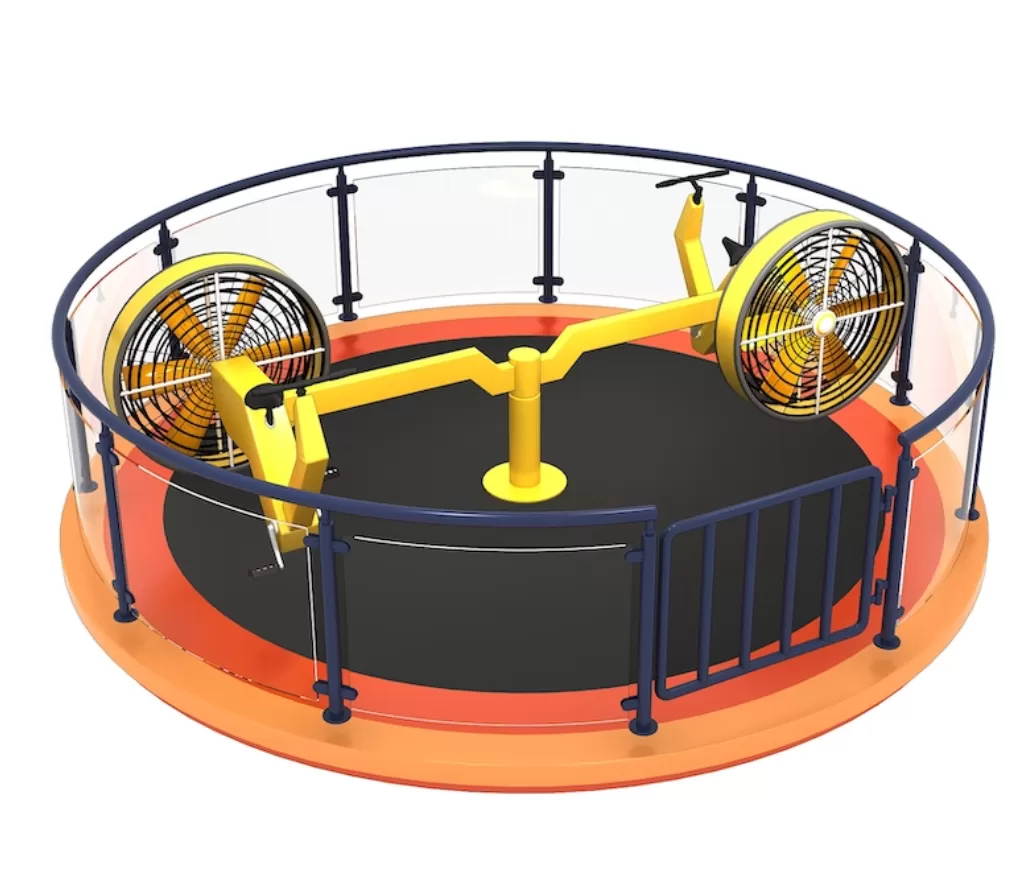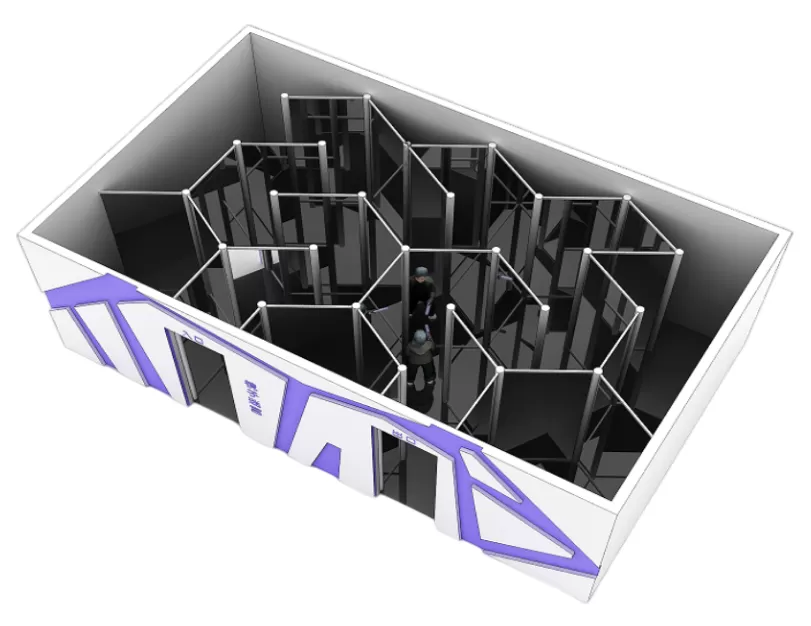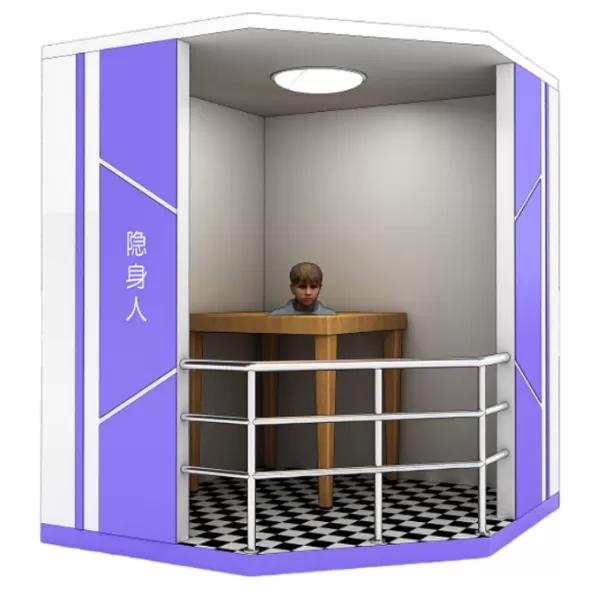深圳科技館(新館)設計指引
Design Guidelines for Shenzhen Science and
Technology Museum (New Museum)
目錄Table of content
TOC \o "1-3" \h \z \u 一、 總體要求 General Requirements................................................................................ PAGEREF _Toc72585464 \h 3
一、總體要求 General Requirements
設計應具有時代性、前瞻性、創新性,考慮深圳科技館(新館)可持續發展能力、保持常展常新效果、后期展區更新改造的需求,在滿足科普功能的同時,重視研究、開發、服務、收藏相關功能。
The design should have a sense of the times, forward-looking, and innovative, considering the sustainable development capability of Shenzhen Science and Technology Museum (new museum), giving visitors continual interests after multi-visits, and the needs of later renewal and renovation of the exhibition area. While meeting the functions of popular science, it also pays attention to research and development, Service, collection etc.
設計人流量預計約300萬人次/年,平日觀眾約8000人次/天,高峰期觀眾約3萬人次/天,面向社會各年齡段大眾,青少年是主要服務對象,創業群體是重要服務對象。
The estimated visitor Number is about 3 million people every year. There will be about 8,000 person/day during weekdays; and the peak No. could be about 30,000 person/day. The Museum is open for all age groups; while children and teenagers are the main targets.
設計要體現國際一流水平,鼓勵國際化聯合團隊參與設計。要求配備不少于一個“數字科技”相關領域的資深專家及其團隊,不少于一個所投主題展區相關學科領域的科學家(副教授或副研究員以上)及其團隊,不少于一個具有國際科學藝術策展經驗的藝術家及其團隊,不少于一個具有展項制作經驗的團隊,作為顧問團隊或是合作的專業機構。
The design should meet the international first-class level. We encourage international joint teams to participate in. The bidding team is required to have no less than one senior expert team in the related field of "digital technology"; no less than one scientist team (Professor or Associate Professor) in the relevant subject area of the bidding exhibition area, no less than one with international science Artists and their teams with experience in art curation work , and no less than one team with experience in exhibits making as a consultant team or a cooperative professional organization.
二、全館主題 The theme of the museum
深圳科技館(新館)要求表達“創新?未來”的展示主題,體現深圳新興產業、未來產業的內容,把科普教育與創新驅動發展戰略相結合。
The Shenzhen Science and Technology Museum (new museum) requires expressing the theme of "Innovation & Future", reflecting the content of Shenzhen's emerging industries and future industries and combining popular science education with innovation-driven development strategies.
為此,不但要把握“創新?未來”這個總的展覽主題,理解數字文明的內涵,還要深入理解數字文明連接創新與未來的多層次含義:
To this end, it is necessary not only to grasp the general exhibition theme of "Innovation?Future" and understand the connotation of digital civilization but also to deeply understand the multi-level meaning of digital civilization connecting innovation and the future:
數字文明是全館的DNA。作為各主題、各展項的核心要素,是展教邏輯的主線,要通過數字科技融合生活和產業,貫通各大科學學科,打破傳統的學科分類,展教以跨學科、交叉學科的形式進行。
Digital civilization is the DNA of the entire museum, the core element of each theme and exhibition item, the mainline of the exhibition and education logic. It is necessary to integrate life and industry through digital technology, connect major scientific disciplines, break the traditional classification of disciplines, and conduct exhibition and teaching in an interdisciplinary and interdisciplinary form.
數字文明帶來的變革是核心。隨著數字技術與經濟社會各領域、各行業的不斷深度融合和跨界發展,數字技術不斷影響我們的世界,深刻改變人類與社會、自然互動的方式,開啟人類認知新規律、發現新現象和創造新事物等方式的創新和變革。
The change brought by digital civilization is the core. With the continuous in-depth integration and cross-border development of digital technology and various fields and industries of economy and society, digital technology continues to influence our world. It profoundly changes the way of interaction between human beings, society and nature, and opens the innovation and change of human cognition of new laws, discovery of new phenomena and creation of new things.
數字科技是連接點。作為數字文明重要維度的數字科技,是連接各領域的最大公約數,要以數字科技這一連接點做適度輻射延展,延伸到背后的非數字科技領域。
Digital technology is the connecting point. Digital science and technology, as an essential dimension of digital civilization, is the largest common divisor connecting various fields. The design firm should extend this connection point of digital science and technology to the non-digital science and technology fields behind it.
因此數字科技不是全部,展教設計需要展現文明形態的變化。世界正一步步往比特世界遷移,原子世界和比特世界的界限也變得模糊,在數字科技影響下的社會治理、生活、產業、科學探索等文明的形態、人們的思考方式、社會文化等等方面都發生著深刻的變革,應從人文的視角來解讀數字文明的演進。
The world is migrating to the bit world step by step. The boundary between the atomic world and the bit world has become blurred under the influence of digital technology, social governance, life, industry, scientific exploration and other forms of civilization, people's way of thinking, social culture, etc. Profound changes are taking place in all aspects, and the evolution of digital civilization should be interpreted from a humanistic perspective.
三、展示內容 Exhibition Content
一級主題: Hello World!、美好生活、智慧產業和宇宙探源,高度概括了人類認識和改造世界不同維度的物質和精神活動,設計過程中必須予以遵循。二級主題及內容,是根據一級主題的方向涵蓋數字時代背景下社會變革、科學技術發展的重點和前沿等內容,例如“重新發現我們的身體”或“從‘制造’到‘智造’”,是建議的內容方向,設計過程中可根據對一級主題的理解,重新規劃二級主題并深入具體的展示內容。在遵循“科技前沿,國家戰略、深圳特色、避免重復”原則的基礎上,可予以創新突破,提供更優秀的設計方案。
The first-level theme highly expands the material and spiritual activities of different dimensions of human understanding and transformation of the world and must be followed in the design process. They are Hello World!, Good Life, Smart Industry and Exploring the Origin of the Universe. The second-level theme and content are based on the direction of the first-level theme, covering social transformation in the background of the digital age, and the focus and frontier of scientific and technological development. For example, "rediscover our body" or "from manufacturing to intelligent manufacturing'" are the suggested content directions. During the design process, the second-level theme can be re-planned and displayed in depth according to the understanding of the first-level theme. Based on following the principle of "frontier of science and technology, national strategy, Shenzhen characteristics, and avoiding duplication,” innovative breakthroughs can be taken to provide better design solutions.
四、展示邏輯 Exhibition Logic
圍繞“場景->技術->原理”的邏輯展開敘事,并關注數字素養、科學思想/方法、科學(家)精神、社會影響及人文等要素,向更深層次內容拓展,完成從需求到科技再到人文的主題升華。其中“場景->技術->原理”是展教的主線,而思維層面的內容,根據實際展教需要選擇性的設計相關內容。以場景切入的敘事邏輯,最終希望可以讓觀眾充分感受到數字文明時代已經到來,勢不可擋,我們應以積極開放的心態擁抱變化。
The narrative is developed around the logic of "scene->technology-> principle". It focuses on digital literacy, scientific ideas/methods, scientific (family) spirit, social influence and humanities, and expands to deeper content, completing the transformation from demand to technology—sublimation to the theme of societies. Among them, the "Scene->Technology->Principle" is mainline of the exhibition and teaching. According to the actual exhibition and education needs, the content of the thinking level selectively design-related content. The narrative logic cut into the scene, in the end, hopes that the audience can fully feel that the era of digital civilization has arrived and is overwhelming. We should embrace change with an active and open mind.
(一)邏輯說明 Logical description
場景體驗:從大家日常可以接觸到的具體的生活、產業、科學探究的場景切入,在體驗的過程中感受技術帶來的改變,并激發觀眾探索場景背后技術、科學原理的好奇心。
Scene experience: cut into the specific life, industry, and scientific exploration scenes that everyone can touch daily, feel the changes brought about by technology during the experience, and stimulate the audience's curiosity to explore the technology and scientific principles behind the scene.
科學技術:介紹體驗場景中涉及的主要技術以及這些技術與數字技術融合后帶來的變化。數字技術已經深度的滲透到各個學科,成為認知和改造世界的通用工具和方法。
Science and technology: introduce the principal technologies involved in the experience scene and the changes brought about by integrating these technologies and digital technologies. Digital technology has penetrated various disciplines and has become a universal tool and method for cognition and transformation of the world.
基礎科學:介紹技術背后的科學原理,通過多元生動的互動方式,讓觀眾在互動中體驗到相應的科學原理,并可以感受到基礎科學的價值,沒有基礎科學就沒有飛速發展的技術以及我們現在豐富多彩的世界。
Basic science: Introduce the scientific principles behind the technology. Through multiple and vivid interactive methods, the audience can experience the corresponding scientific principles in the interaction and feel the value of basic science. Without basic science, there would be no rapid development of technology and our present Colorful world.
數字素養:隨著數字技術的進步和數字化社會的發展,數字素養的內涵在不斷豐富和完善。它既包括對數字資源的接受能力,也包括對數字資源的給予能力,是指人們為參與社會生活,通過數字設備和網絡技術,正確、安全地訪問、管理、理解、整合、溝通、評估和創造信息等能力,包括計算機素養、信息和通信素養、媒體素養等。
Digital literacy: With the advancement of digital technology and the development of digital society, the connotation of digital literacy is constantly enriched and improved. It includes people's ability to accept digital resources and their ability to give digital resources. It refers to the ability of people to correctly and safely access, manage, understand, integrate, communicate, evaluate and create information through digital equipment and network technology to participate in social life, including computer literacy, information and communication literacy, media literacy, etc.
科學問題/方法:在場景、科學技術、基礎科學的內容中,放眼世界科學技術的發展趨勢,融合前沿的科學問題,引導公眾進行思考,在問題中探究科學。或者結合經典實驗、經典理論、經典故事及經典儀器裝置設備等開展敘事,讓觀眾了解科學方法。
Scientific issues/methods: In the context of scenarios, science and technology, and basic sciences, look at the development trend of world science and technology, integrate cutting-edge scientific issues, guide the public to think, and explore science. Or combine classic experiments, classic theories, classic stories, classic instruments and equipment to develop narratives to let the audience understand the scientific method.
科學(家)精神:要放眼世界科學技術的發展過程,融入科技發展的歷史沿革,結合經典的科學家故事,讓觀眾感受科學思想、科學精神、科學家精神,啟迪科學思維。
Scientific/scientist spirit: It is necessary to look at the development process of world science and technology, to integrate into the historical evolution of scientific and technological development, and combine classic scientist stories to let the audience experience scientific thinking, scientific spirit, and scientist spirit, and enlighten scientific thinking.
社會影響/人文:科技深刻的改變著社會的形態,帶來了正面的影響,也同時帶來了負面的影響。如何從客觀的視角審核和思考,引導觀眾以理性的眼光來看待這些問題。
Social influence/humanities: Technology is profoundly changing the shape of society, bringing positive and negative influences at the same time. Review and think from an objective perspective and guide the audience to look at these issues with a rational perspective.
(二)場景說明Scene description
場景作為展教邏輯的切入點,也是關聯公眾、主題、展項和科技的關鍵節點,要根據主題搭建場景,更重要的是讓公眾從場景中體驗,引發公眾解決問題的興趣,吸引公眾了解解決問題涉及的前沿技術,并進一步探究技術背后的科學原理,激發公眾對原理、技術創新應用的思考,避免就科技談科技。
As the entry point of the exhibition and teaching logic, the scene is also a key node related to the public, themes, exhibition items and technology. It is necessary to build the set according to the theme, and more importantly, let the public experience the scene, trigger the public's interest in solving problems, and attract the public to understand the cutting-edge technology involved in problem-solving. And further, explore the scientific principles behind the technology, stimulate the public to think about the principles, technological innovation and application, and avoid focusing on the technology itself.
此處說的場景包含兩層核心含義:
The scenario mentioned here contains two core meanings:
應用場景:體現主題的典型應用場景,通過還原現實情境,提供真實科技產品,或采用虛擬技術等手段,搭建符合現實、適合公眾與技術體驗互動的場景,形成展項的內在關聯,避免展品堆砌。
Application scenarios: Typical application scenarios reflects the theme. By restoring the actual situation, providing accurate technology products, or using virtual technology and other means, build a scene in line with reality and suitable for the interaction between the public and technical experience, forming the exhibits' internal connection avoiding stacking of exhibits.
氛圍場景:結合應用場景的需求,充分體現科學與藝術的結合,并營造出符合主題的氛圍,依據各子主題進行各部分的環境設計,使每個主題空間各具特色的同時符合二級主題的總體風格,配合展項呈現出精彩不斷的展示效果。
Atmosphere scene: Combining the needs of application scenes embody the combination of science and art and create an atmosphere that fits the theme. Carry out the environmental design of each part according to each sub-theme so that each theme space has its characteristics and conforms to the overall style of the secondary theme, and presents a beautiful and continuous display effect with the exhibition items
整體而言,要通過體驗場景的構建,連接公眾、企業和科技,傳達“創新?未來”的展示主題,形成主題鮮明、知識交叉的設計方案。
On the whole, it is necessary to connect the public, enterprises and technology through the construction of experience scenes, convey the display theme of "Innovation?Future" and form a design with clear themes and cross-knowledge.
五、觀眾定位 Visitor positioning
深圳科技館(新館)面向更多元化的觀眾:在年齡范圍方面,主要覆蓋青少年,同時需要滿足全年齡段觀眾;在職業范圍方面,主要覆蓋學生群體,重點關注創業者、企業家,并且兼顧公務員、科學家、投資家、專業人士等社會觀眾。科學館與觀眾的關系中,觀眾角色不再均一化、同質化,需要引入新的維度,即科學技術的使用者、消費者、利益相關者、決策參與者更多的維度。深圳科技館(新館)將滿足多元需求,以體驗場景的搭建,連接各類群體,服務于社會各界創新的需求。
The Shenzhen Science and Technology Museum (new museum) is aimed at a more diverse audience: in terms of age range, it mainly covers young people, and needs to meet audiences of all ages; in terms of occupation, it mainly covers student groups, focusing on entrepreneurs and entrepreneurs It also takes into account the social audience such as civil servants, scientists, investors, and professionals. In the relationship between the Science Museum and the audience, the role of the audience is no longer homogenized. It should also service visitors like, users of science and technology, consumers, stakeholders, and decision-making participants. The Shenzhen Science and Technology Museum (new museum) will meet diverse needs, build experience scenes, connect various groups, and serve the innovative needs of all sectors of society.
除了以上變化,觀眾的角色在深圳科技館(新館)也將發生一些新的變化:
In addition to the above changes, the role of the audience will also undergo some new changes in the Shenzhen Science and Technology Museum (New Museum)
展教設計者:觀眾是展項創作的參與者,通過數字化手段,可以一起參與到展項的創新、創造過程中;隨著來館的觀眾越來越多,展教的創意積累將越來越多。
Exhibition and education designers: audiences are participants in the creation of exhibition items. Through digital means, they can participate in the innovation and creation process of exhibition items. As more and more audiences come to the exhibition hall, the accumulation of creativity in exhibitions and education will increase.
展項的參與者:觀眾也是展項的一部分,觀眾與展項互動沉淀的數據與展項融為一個整體,這些數據在脫敏處理后能夠可視化呈現給其他觀眾。
Participants of the exhibition item: The audience is also a part of the exhibition item. The interactive data and the exhibition item are integrated as a whole. After desensitization, these data can be visualized to other audiences.
線上觀眾:線上參觀科技館、參與科技館互動的觀眾也將是科技館觀眾的一部分,其數量甚至會超過來到實體展館的觀眾,展項設計時,也需要考慮這些線上觀眾如何更方便、實時的進行互動。
Online audience: online visitors who participate in the interaction of the science and technology museum will also be part of the museum audience. The number may even exceed the number of visitors to the physical exhibition hall. When designing the exhibition items, it is also necessary to consider how these online visitors can have convenient and real-time interact.
六、觀眾體驗 Visitor Experiences
(一)精彩的體驗 “Wow”experience
深圳科技館(新館)面向全球,將以開放、創新的姿態迎接全球的觀眾,力爭成為全球最知名的科技館之一。定位全球首家數字文明館,展項設計應著眼超越觀眾的預期,為觀眾帶來全新的體驗,充分體現數字技術為生活、產業、科學探索帶來的全方面升級,讓觀眾發自肺腑的贊嘆:“哇哦!”
The Shenzhen Science and Technology Museum (new museum) faces the world and will welcome global audiences with an open and innovative attitude, and strive to become one of the most innovative science and technology museums in the world. Positioned as the world’s first digital civilization pavilion, the exhibition design of our museum should exceed the audience’s expectations and bring a brand new experience to the audience. It fully reflects the all-round upgrades that digital technology has brought to life, industry, and scientific exploration, making the audience feel "Wow!"
未來科技感:深圳科技館(新館)面向未來,探索創新,需要讓觀眾到達展館時就像進入到一個充滿想象的未來世界里。
Sense of future science and technology: Shenzhen Science and Technology Museum (new museum) faces the future and explores and innovates. When the audience arrives at the exhibition hall, it is like entering an imaginative future world.
充滿樂趣:不是高高在上的知識傳播,而是平等互動,以充滿趣味的設計,引導觀眾互動,并沉浸其中。
It is full of fun: it is not high-level knowledge dissemination, but equal interaction, exciting design, guiding the audience to interact and immerse themselves in it.
驚喜不斷:設置細致貫穿的線索,讓觀眾可以持續挖掘別有新意的新發現;同時需要考慮更新的便利,可以方便升級迭代,讓觀眾每次到來都能有新鮮感。
Continuous surprises: setting meticulous and penetrating clues so that the audience can continue to explore new and innovative discoveries; at the same time, the convenience of updating needs to be considered, which can facilitate upgrades and iterations, so that the audience can have a sense of freshness every time they come.
回味無窮:分層次的體驗設計,不但讓觀眾在體驗時感受到不同層次的體驗,而且讓觀眾離開后還能回味無窮,期待下次來訪。
Endless aftertaste: The hierarchical experience design allows the audience to experience different experience levels during the visit and allows the audience to have an infinite aftertaste after leaving, looking forward to the next stop.
(二)靈活的體驗 Flexibility
深圳科技館(新館)面積巨大,內容豐富多元,我們要為公眾友好的參觀體驗提供有效工具。
The Shenzhen Science and Technology Museum (new museum) is huge in size and rich in content. We must provide effective tools for a public-friendly visit experience.
1. 主題空間(Pavilion)
四個樓層(F2—F5)中的每一層都將傳達一個主題,例如生活或產業。每個主題都細分為子主題,例如“重新發現我們的身體”或“從‘制造’到‘智造’”。子主題將成為主題空間(Pavilion),并具備完整的體驗內容和能自我運轉的特點,就像是館中館,每個主題空間本身就能夠成為觀眾的參觀的目的地。
Each of the four floors (F2—F5) will convey a theme, such as life or industry. Each theme is subdivided into sub-themes, such as "Rediscover our bodies" or "From "manufacturing" to "intelligent manufacturing". Sub-themes will become themed spaces (Pavilion). With complete experience content and self-operating characteristics, just like a pavilion in an Expo, each themed area itself can become a destination for the audience to visit.
內容規劃中樓層主題下的子主題,可對應為一個主題空間(Pavilion)。因此,每個主題空間都是樓層主題的一部分,并且獨立于其他主題空間,用以達成多樣性和靈活性的目標:
The sub-themes under the floor theme in the content plan can correspond to a themed space (Pavilion). Therefore, each theme space is part of the theme of the floor and is independent of other theme spaces to achieve the goal of diversity and flexibility:
一個主題空間可以包含一個或多個展項(群)。舉例來說,這些主題空間本身就將成為(某些)觀眾前來深圳科技館(新館)的原因。它也可以提供除了展覽之外的其他特定功能區,例如教室、工坊、實驗室、小劇場、零售或者餐飲等。
A themed space can contain one or more exhibits (groups). For example, these themed spaces themselves will be why (some) viewers come to the Shenzhen Science and Technology Museum (New Museum). It can also provide other specific functional areas besides exhibitions, such as classrooms, workshops, laboratories, small theatres, retail or catering, etc.
主題空間應該充分利用非傳統的建筑布局。因為主題館的各層空間沒有被明確分割而是連續不斷的,主題空間可以用單獨的結構相連,觀眾在每個樓層可以自由參觀。與分散展示的傳統開放式主題館相比,這種不尋常的空間組織中的獨立主題空間每時每刻將會帶來驚喜和發現。
Pavilions make good use of the unorthodox building layout. Since there are no clearly defined galleries but rather a continuum of spaces, pavilions allow for separate structures to be connected by fluid circulation paths on each floor. Compared to traditional open galleries with scattered displays free-standing pavilions in this unusual organization of space creates surprises and discovery at every turn.
一個主題空間必須有一個清晰的空間界限。可以開放或者半開放式,甚至可以跨層,觀眾能夠直接進入而不需要通過另一個主題空間。每一個主題空間都有自己的視覺特征,它的“外殼”可以像地板或者天花板上的一個標志一樣簡單,但是它也可以是一個只有一個入口的不透明的“黑盒子”。主題空間的設計將由它在樓層的位置、內容和表達方式來確定。
A themed space must have a clear boundary. It can be open or semi-open, even across floors, and audiences can enter directly without passing through another Pavilion. Each pavilion will be visually distinct. Its "shell" can be as simple as a sign on the floor or ceiling, but it can also be an opaque "black box" with only one entrance. The design of the themed space will be determined by its location, content and expression on the floor.
每個主題空間彼此獨立的好處是可以關閉進行維護或完全更換,而不會影響其余部分或參觀者的體驗。隨著科學技術的飛速發展,展項的更新也會越來越快,獨立主題空間會具有非常大的優勢。
The benefit of each pavilion being independent from all others is that it can closed for maintenance or completely replaced without any impact on the rest of the floor or the visitor experience. This will be a major advantage in the coming years as science and technology evolves at a fast pace. Without this flexibility, the museum could quickly become obsolete.
主題空間可大可小,它們本身具有獨特個性的內容和展示方式,喚起觀眾注意了解到它們所屬于的子主題。
They can be large or small. With their unique personality and visitor experience ,they can evoke the sub-theme they are part of.

2. 個性體驗路線 Personal route guide
體驗路線是通過整合來自不同主題空間的展項、活動等組成有順序清單,形成不同的故事主題,從而為觀眾提供個性化體驗模式。體驗路線庫為觀眾提供了獨特而豐富多樣的科技館參觀方式。體驗路線為公眾提供了一種與科技館互動的全新方式,讓公眾參與到科技館體驗的創造過程中,共同打造一個下一代的科學中心。公眾可以根據自己的知識、好奇心創建一個體驗路線,創造自己的獨特參觀體驗。對于想要輕松參觀的觀眾們而言,他們可以在一個樓層短暫的停留;而對于想要深層探索的觀眾們而言,他們能夠參觀整個科技館。為此,在設計過程要關注體驗路線創建的需求,清晰提煉主題關鍵詞。
The route guide is to form an ordered list of exhibits and activities from different themed spaces to form different story themes to provide the audience with a personalized experience mode. The route guide library provides visitors with unique and diverse ways to visit the Science and Technology Museum. The route guide enable the next generation science center model by having many participants involved in creating the experience of the museum. The visitors can create a route guide based on their knowledge and interests to create their own experience. Route guide are highly flexible. For visitors who want a light visit, they can be short and stay on one floor. For visitors who are looking for deeper exploration, they can span the whole museum. For this reason, in the design process, we should pay attention to the needs of route guide creation and refine the subject keywords.






